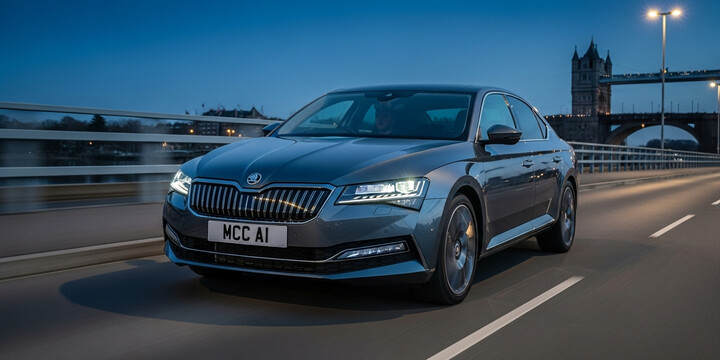
SKODA SUPERB (2024-)
The SKODA SUPERB (2024-) is a stylish and versatile family car that comfortably combines space, practicality, and modern features. Positioned as a premium estate or saloon, the SUPERB offers a sophisticated design with generous interior room, making it ideal for families, frequent commuters, or anyone needing a reliable and comfortable vehicle for daily life and longer journeys. Its reputation for reliability and fuel efficiency makes it a popular choice among used car buyers, with an average mileage of just over 14,000 miles and a typical private sale valuation around £32,541, indicating strong value retention.
What sets the SKODA SUPERB (2024-) apart is its polished driving experience, refined build quality, and a suite of modern amenities that cater to comfort and convenience. The model concludes popularity for its balanced handling, spaciousness, and advanced safety features, making it competitive against other vehicles in its class. Whether used for family outings, business travel, or daily commuting, the SKODA SUPERB (2024-) continues to stand out as a practical yet stylish choice in the UK’s used car market, offering excellent value for those seeking a dependable and versatile vehicle.

average use

The data indicates that the majority of recent mileage recordings for the 2024 Skoda Superb are quite low, with 93.8% of vehicles having driven between 0 to 10,000 miles. Only a small fraction, 3.1% each, have recorded mileages in the 10,000 to 20,000 miles and 40,000 to 50,000 miles ranges. This suggests that most of these vehicles are relatively new and likely have low usage, which is typical for recent model years at this stage of their lifecycle.

vehicle values

The private sale price data for 2024 Skoda Superb vehicles reveals several pricing trends. The most common price ranges, each representing about 12.5% of the sample, are between £31,000–£32,000, £33,000–£34,000, and £35,000–£36,000, indicating these are typical private sale prices. Smaller proportions, around 3.1%, are found at the lower (£23,000–£24,000, £27,000–£28,000) and higher (£37,000–£38,000) ends, suggesting these are less common. The data shows a concentration of sales in the £30,000–£36,000 range, with prices gradually increasing, which reflects a relatively narrow and premium pricing window for this model in the private market.

production years

The data indicates that for SKODA SUPERB vehicles from 2024 and 2025, a majority—approximately 59.4%—were manufactured in 2024, with the remaining 40.6% produced in 2025. This suggests that most vehicles of this model in the sample are relatively recent, though a significant portion is also from the following year, potentially reflecting ongoing production or inventory distribution across these two years.

colour popularity

The data on the main paint colours for the 2024 ŠKODA SUPERB reveals that grey is the most popular choice, accounting for approximately 28.1% of vehicles. Black follows as a close second at 21.9%, indicating a strong preference for darker, neutral tones. Blue is also relatively common, making up about 15.6%. Brighter colours are less prevalent, with yellow representing around 9.4%, red and white each at 6.3%, and silver at 12.5%. Overall, the trend suggests that buyers tend to favor classic, subdued colours like grey and black over more vibrant options.

ownership cycle

The data indicates that for the sample of SKODA SUPERB (2024-) vehicles, the majority of vehicles (87.5%) have only one registered keeper. Additionally, 9.4% of the vehicles have an unknown or unlisted number of registered keepers, and a small portion (3.1%) have had two registered keepers. This suggests that most vehicles are likely to be privately owned and retained by the original registered keeper, with very few changing hands multiple times within the sample.

engine choices

The data for the 2024 Skoda Superb indicates that the majority of these vehicles are equipped with 1968cc engines, accounting for 53.1% of the models analyzed. The next most common engine capacity is 1498cc, representing 37.5%, while a smaller portion, 9.4%, feature 1984cc engines. In terms of fuel type, over half of the vehicles (53.1%) run on diesel, followed by 37.5% being hybrid electric models, and a small percentage (9.4%) using petrol. Notably, hybrid electric variants make up a significant share, highlighting a notable trend towards more eco-friendly powertrain options within this model range.












